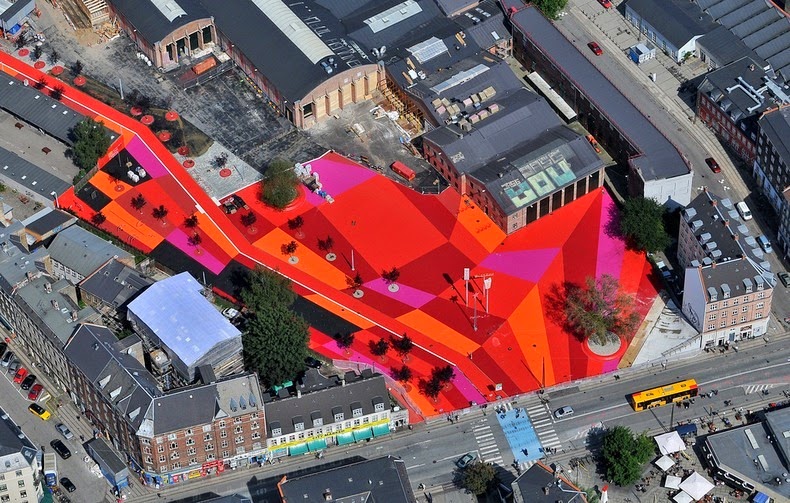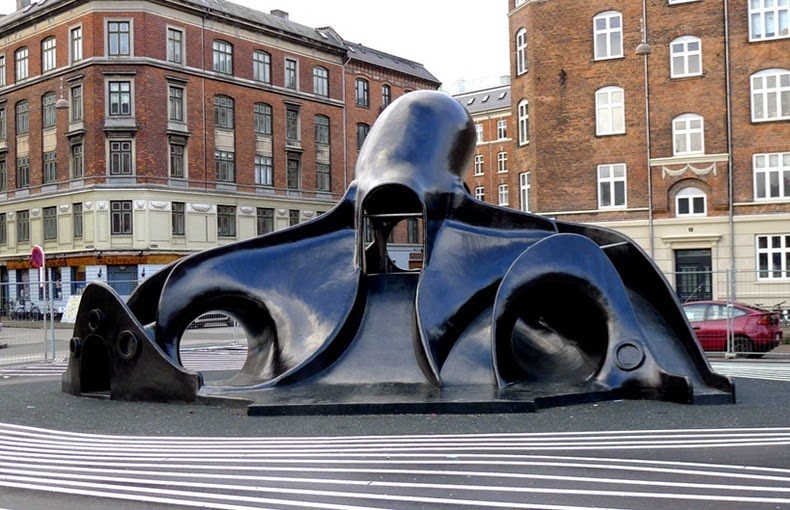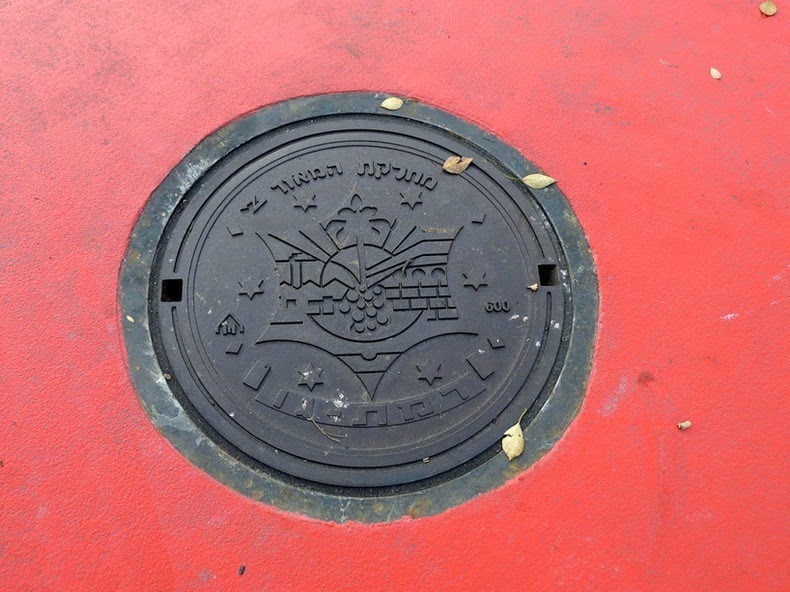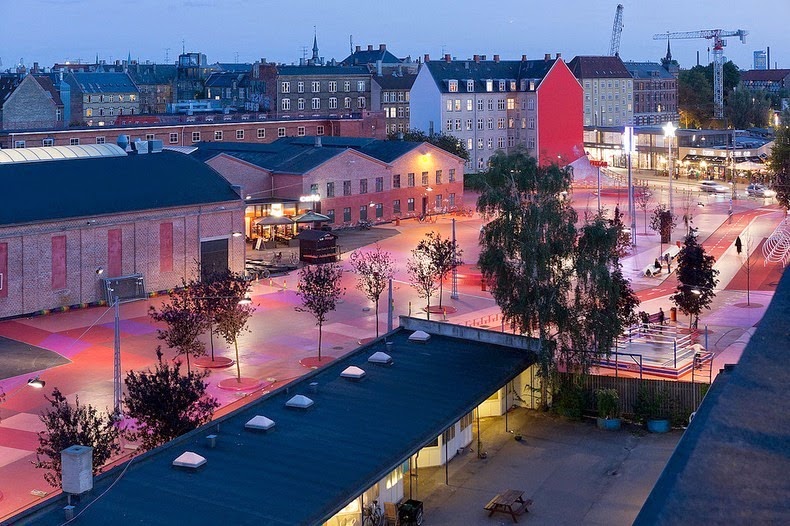Superkilen is a public park in the Nørrebro district of Copenhagen, Denmark. Designed by the arts group Superflex with the collaboration of BIG architects and a German landscape architecture firm called Topotek1, the park is considered one of the most ethnically diverse and socially challenged neighborhoods in the Danish capital. Filled with objects from around the globe, it is designed as a kind of world exposition for the local inhabitants, covering over 60 nationalities, who have been able to contribute their own ideas and artifacts to the project.

Stretching some 750 meters along either side of a public cycle track and covering a total area of some 30,000 square meters, the park has three color-coded segments each semi-autonomous environments with their own programmatic and atmospheric agendas. The red square, painted bright red, orange and pink, focuses on recreation and modern living. The black market at the center is the park’s square features a rolling landscape that is emblazoned with a mesh of white lines, which wind around set pieces like the Moroccan fountain and Chinese palm trees. The green park has rolling hills, trees and plants suitable for picnics, sports and walking the dog.
Many of the objects in the park have been specially imported or copied from foreign designs. They include swings from Iraq, benches from Brazil, a fountain from Morocco and litter bins from England. There are neon signs from throughout the world advertising everything from a Russian hotel to a Chinese beauty parlour. Even the manhole covers come from Zanzibar, Gdansk and Paris. In all, there are 108 plants and artefacts illustrating the ethnic diversity of the local population.
“When our team was invited to propose a project in this neighborhood we realized that we had to do more than just urban design. Rather than plastering the urban area with Danish designs we decided to gather the local intelligence and global experience to create a display of global urban best practice comprising the best that each of the 60 different cultures and countries have to offer when it comes to urban furniture.” said Nanna Gyldholm Møller, project leader for BIG architect.
Photo credit: BIG (Bjarke Ingels Group)
Photo credit: BIG (Bjarke Ingels Group)
Photo credit: BIG (Bjarke Ingels Group)

Photo credit: BIG (Bjarke Ingels Group)
Bus stop signs in Arabic. Photo credit: BIG (Bjarke Ingels Group)

Sewage plates from Israel adorn the ground. Photo credit: BIG (Bjarke Ingels Group)
Photo credit: BIG (Bjarke Ingels Group)
Photo credit: BIG (Bjarke Ingels Group)
Photo credit: BIG (Bjarke Ingels Group)
Photo credit: BIG (Bjarke Ingels Group)
Photo credit: BIG (Bjarke Ingels Group)
Photo credit: BIG (Bjarke Ingels Group)
Photo credit: BIG (Bjarke Ingels Group)
Photo credit: BIG (Bjarke Ingels Group)
Photo credit: BIG (Bjarke Ingels Group)
Photo credit: BIG (Bjarke Ingels Group)

Photo credit: BIG (Bjarke Ingels Group)
Sources: Wikipedia / Design Boom


























Re:Sewage plates from Israel!
ReplyDeleteNot a Sewage plate.
It's a Lighting Dept. Plate.
Danes can't read Hebrew.